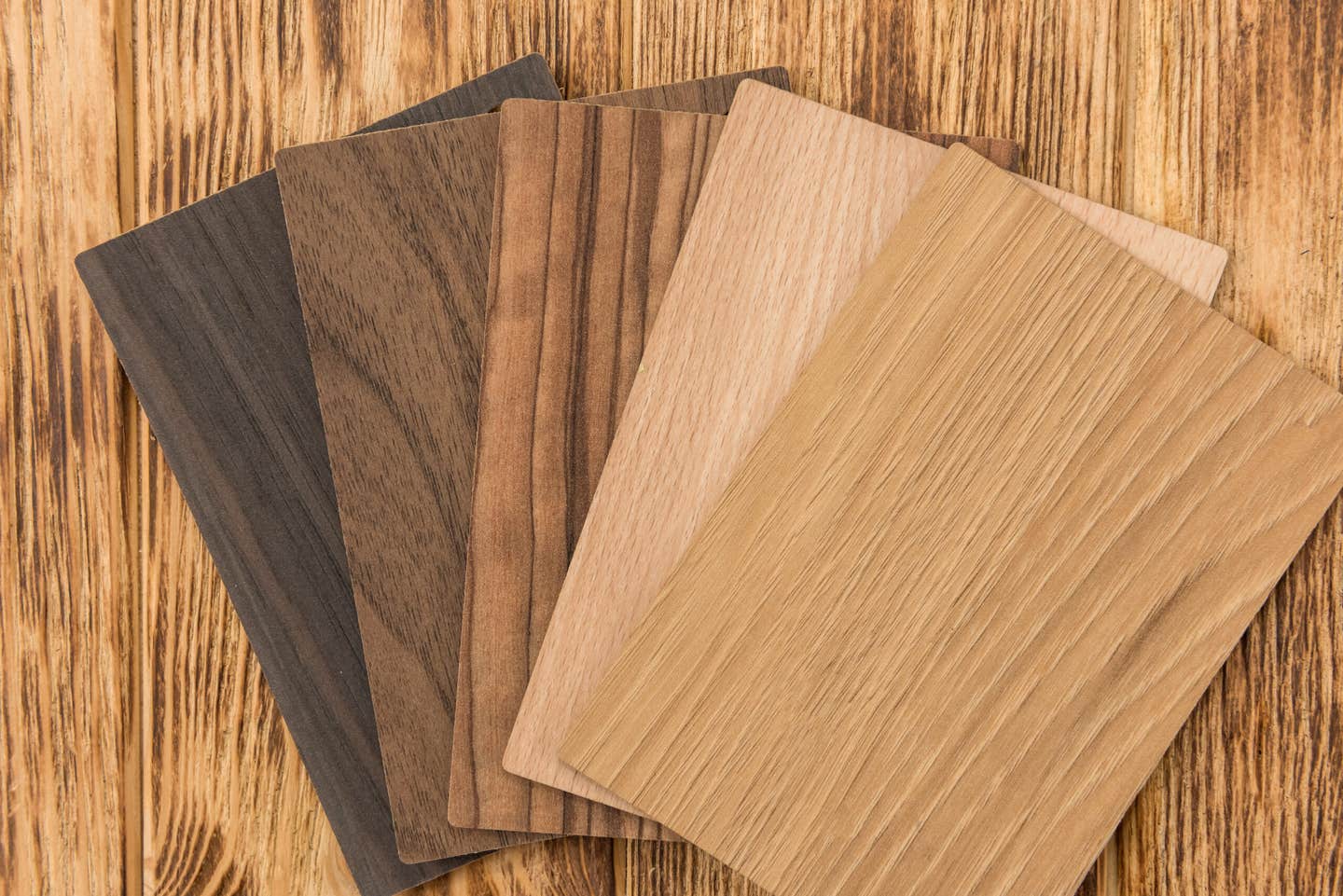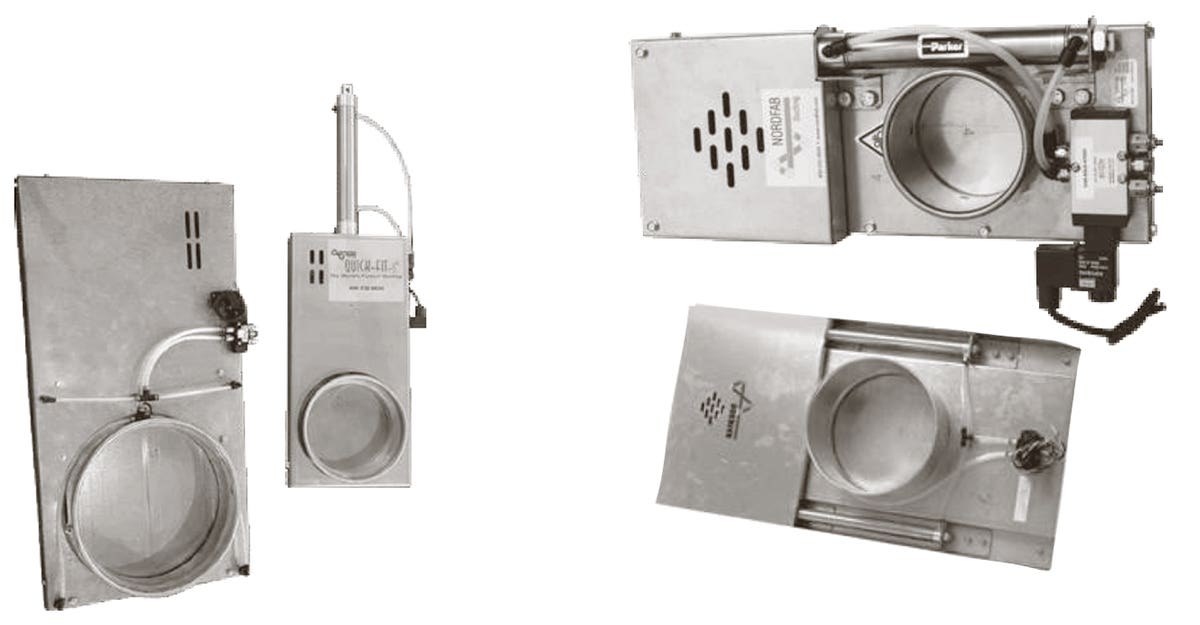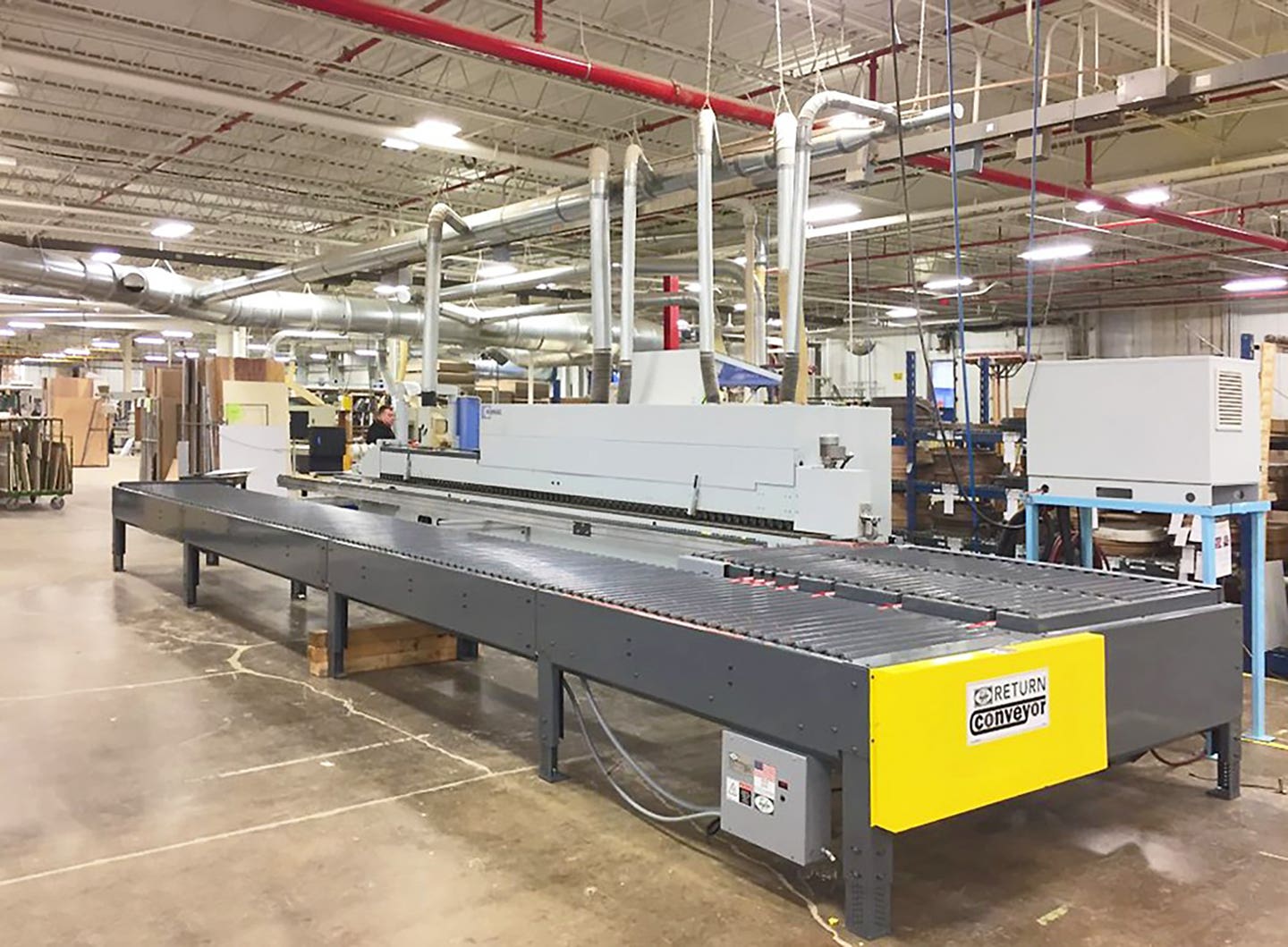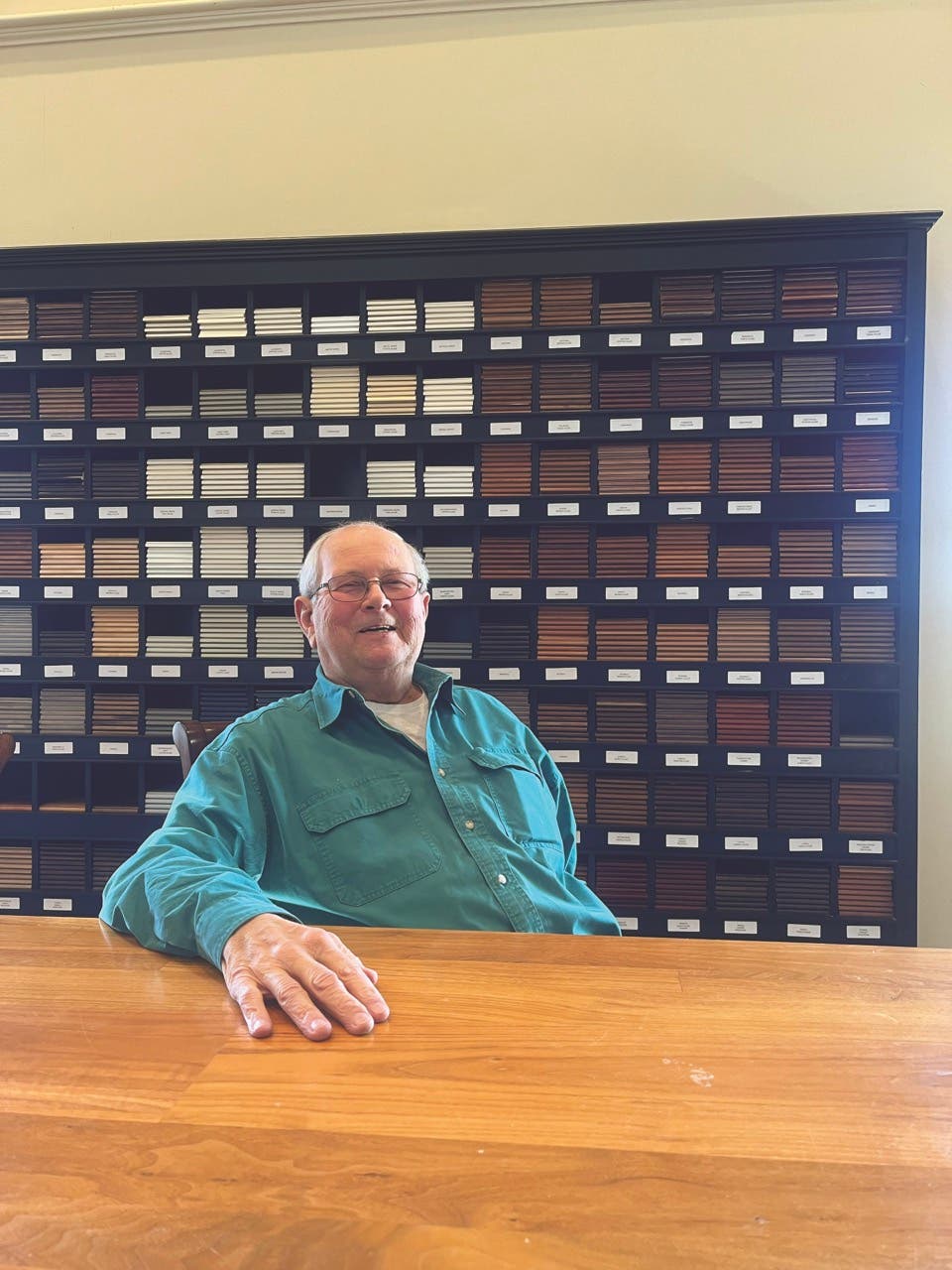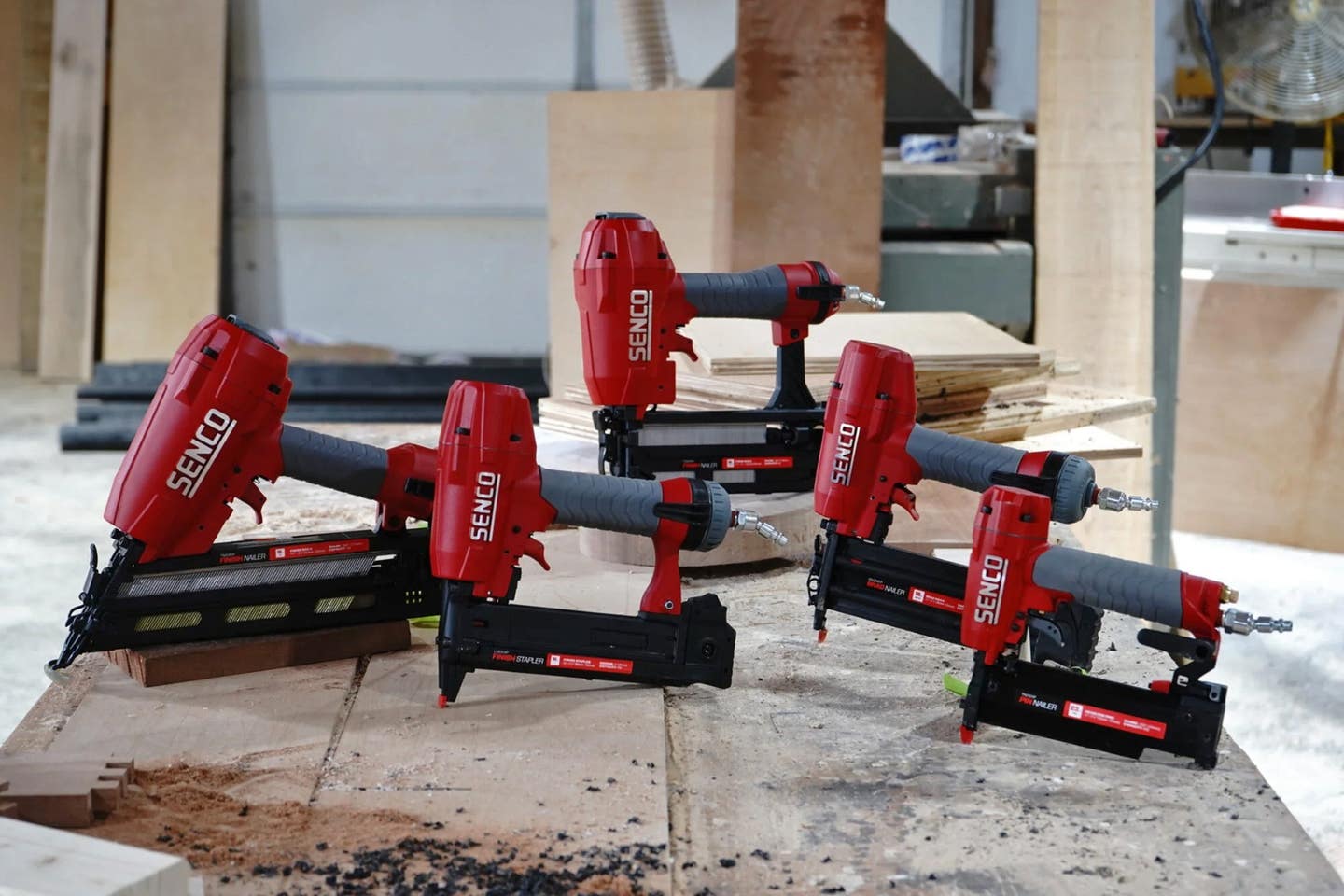Joinery jigsaws
British writers first began using the term “joiner” in the 14th century to describe people who fixed wooden parts together. It wasn’t until 1678 that the word “joinery” emerged, but the practice itself dates to the ancient Egyptians.
British writers first began using the term “joiner” in the 14th century to describe people who fixed wooden parts together. It wasn’t until 1678 that the word “joinery” emerged, but the practice itself dates to the ancient Egyptians. Traditional furniture and casework joinery includes butt, miter, dado, rabbet, half-lap, tongue-and-groove, mortise-and-tenon, wedged- and haunched-tenon, box- or finger-joint, dovetail, sliding dovetail, pegged and lock miter joints, among others. And because cabinet boxes, drawers, face frames and five-part doors all still require joining, the industry has continued to foster a number of new methods in the last few years.
One of the more interesting turns of late has been the evolution of hardware-free, ready-to-assemble (RTA) casework that is milled on a CNC, ships flat and simply clicks together in the shop or on-site. Doing that can require a considerable investment in equipment, so many shops have turned to a handful of reliable outsourcing suppliers.
If RTA isn’t the way, there are lots of other joinery options available — some of which are visible, many invisible and a few disguised. In commercial casework, biscuit and pocket-screw joinery has replaced a lot of screw-and-glue or pin-and-staple methods in the last couple of decades and in high-volume pocket-screw joinery, Kreg and Castle lead the way. Kreg Tools (kregtool.com) builds half a dozen high-speed machines that make short work of face-frame and panel assembly. They range from the affordable benchtop Foreman to the DK5100, a five-head panel boring machine that can drill from one to five pocket holes simultaneously across cabinet sides, shelving, stairs and window or door extensions. Kreg also offers a couple of plug-cutting bits that allow a shop to make its own species-specific plugs in-house.
Castle’s joinery options include four machines (three of which are foot-operated) that use a router to mill the screw pocket. The company (online at castleusa.com) also has a combination machine, the CSI-1.5D, that uses its patented Screw-in-Pocket technology to cut Castle’s distinctive screw pocket, drill a low angle pilot hole and then insert a flush, stackable screw in about 1.5 seconds.
Foreign connections
The Swiss company Lamello AG (lamello.com) offers a dizzying array of joinery options through Colonial Saw in Kingston, Mass. and Ontario, Calif., and also through its own subsidiary Invis North America. Lamello’s new Mx2 uses a magnetic field to tighten a bolt inside invisible hardware and pull a joint together. There is no physical contact. The impact wrench effect of the Invis joiner produces a knocking sound at the end of the screwing process after about five seconds and this indicates that the connection has closed. To open it for knockdown (KD) applications, the rotation of the actuator is simply reversed and the bolt unthreads.
Lamello also offers the P System, which uses a variety of quarter-moon-shaped connectors (either permanent or KD) that slide into arced T-slots to join parts together. It’s available for manual (using a Lamello joiner) or CNC milling. And the company’s Classic system is thriving, too, with the addition through the years of a number of new connectors that use traditional biscuit slots and either clip or slide together or require the use of an Allen wrench.
A joinery system from Ireland called Ovvo (ovvotech.com) has recently made waves in European furniture and cabinetry shops and is just entering the U.S. market. It’s essentially a clip-together, two-part connector and the mortises can be milled manually with a special handheld tool, or on a stand-alone Ovvo foot-operated machine or with 3-, 4- or 5-axis CNC technology. The company has just introduced its newest connector, the V-Range, which is for use in composites, ply and solid-surface materials that are 12mm (1/2”) or more thick. The new product retains Ovvo’s patented push-click-connect locking mechanism and also incorporates a new dovetail design to bring better shear and tensile strength to the joint. The single piece housing makes automatic insertion possible.
Zipbolt Pty Ltd (zipbolt.com) is an Australian company that offers a number of cabinet joinery solutions. Widely known as a specialty hardware supplier for countertop installers and stair builders, the product line has grown of late to include KD connectors for cabinets and furniture. One of these, OneDrive, is a fully self-contained one-piece connector with a self-exiting screw shaft and it was specifically designed for CNC routers. Once the cutout is produced, the device is inserted and tightened with a hex bit in a cordless drill. It is just as easy to untighten. OneDrive offers considerable time savings during assembly, and can be fitted from inside or outside the cabinet as needed.
Festool offers two Domino mortise-and-tenon joiners (festooldomino.com) that mill slots for loose (floating) tenons. Domino joiners replace stationary hollow-chisel and slot mortisers and occupy a lot less floor or bench space. Plus, they can be brought to the job site. The larger XL DF 700 model can bore mortises up to 2-3/4” deep (for 5-1/2” long tenon stock), so it’s a great joinery option for heavy millwork like coped entry doors, furniture along the lines of joining the straight edges of large live-edge slabs to make dining tables and even some post and beam applications.
Hoffmann Machine Co. makes a couple of dovetail joinery machines with a difference: they cut tail-shaped slots and the woodworker inserts one of several different wood or plastic double-dovetail keys to complete the joint. They work on wood and wood-related materials such as MDF, plywood, particleboard, etc. Most commonly, the system is used for miter joints from small, applied moldings to mitered cabinet doors, base frames and various furniture components.
Joinlox (joinlox.com/striplox) offers a range of joinery options that are simple to use, strong and secure. Some are hidden while others are surface-mounted. Striplox connectors are used on solid hardwood and softwood, MDF, composite panels and more. They’re made from heat-stabilized and glass-reinforced nylon and they can be used for permanent or reversible assembly and reassembly.
A woodworker looking for a catalog of RTA and similar hardware can spend a few minutes on the Häfele site (easylink.hafele.com), where there are dozens of mechanical joinery options to run through. Woodworker’s Hardware has similar offerings at wwhardware.com.
North American solutions
The Beadlock joinery system (beadlock.com), part of Rockler Cos., features a loose tenon joint made with a hand drill and template. The effect is much the same as a traditional mortise-and-tenon, except that the Beadlock is a lot faster and easier to execute. Rockler now sells a router bit that allows woodshops to make their own tenon stock.
FastenLink makes a plastic dowel that slides into a tapered groove (called a ramp) that is cut into the wood. This guides the FastenLink dowel until it clicks into the locked position, seamlessly connecting adjoining piece. The inexpensive dowels come in 1,000 and 5,000 packs and the router bit is available in both carbide and diamond versions for rail and pod, flatbed or feedthrough CNC.
Lockdowel (lockdowel.com) has a series of cleverly designed plastic and metal U- and H-shaped connectors called EClips that allow a woodworker to create cabinets or furniture that slides or snaps together. The basic setup requires nothing more than a portable router and a special T-slot bit and the EClips are easy to install manually. They were designed for assembling cabinets, hutches, drawer boxes, drawer fronts, tables, desks, closets etc. On high-volume production runs, woodshops can use the company’s auto-insertion equipment and Laguna Tools (lagunatools.com) has teamed up with Lockdowel so its SmartShop LD4 boring machine delivers fast and precise drilling and insertion for EClips.
In kind of a retro move, Lee Valley & Veritas (leevalley.com) offers a zinc-plated steel joinery plate with the stock number 00S23.50. The L-shaped bracket comes with various slotted tabs and these allow them to be used as adjustable or quick-disconnect joints in furniture. Because there are only two screws and most of the time the screw holes are hidden, cabinetmakers also like to use the plates as temporary clamps until the glue in a joint cures, and then remove them and reuse them later. They are sold in packages of 10 under the name Metal Assembly Fittings.
Lee Valley & Veritas also sells Bench Bolts (item 05G07.02) and Bed Bolts (05G17.01) as an option for large joinery such as that used to build the legs of workbenches. One can snug the bolts if anything loosens because of changes in humidity. The solid brass tubular nuts slide into a predrilled hole in one wooden part and a long steel bolt threads into that, drawing the second part tight. Similar products are available from Highland (highlandwoodworking.com, Item No. 168045), Woodpeckers (woodpeck.com, search for Steel Cross Dowels), McMaster-Carr (mcmaster.com, item 90835A210), and TimberLinx (timberlinx.com).
Modular Systems has the Mod-eez RTA fastening system (mod-eez.com), which uses a spring steel clip and a large, collared screw as the two mating members. The steel makes the joints strong yet flexible, while the collar resists torsion.
Glaser & Associates (glaserbolt.com) distributes a joinery option called the TorpedoCSIS. This is essentially a smaller version of the bench bolt, but with a few ingenious twists. It’s built around a single shaft and clamp that connects with a number of different anchors that are designed to hold securely in various materials such as plywood, honeycomb, chipboard, MDF and so on.
Shops that need specialty screws for their joinery can find a huge array at either deerwood.com or screw-products.com.
Jigs and more
The newest innovation in joinery from Leigh Industries (leighjigs.com) is the RTJ400. This jig was designed specifically for router table use, and provides fast and accurate routing of through dovetails, box joints and half-blind dovetails. It makes five sizes of through dovetails at two different pitches, three sizes of single pass half-blind dovetails, and four sizes of box joints (finger joints). Simply center the board on the template and guide the jig across the router table to rout joints. One template makes all three types of joinery.
Woodpeckers new coping sled (item COPESLED1 at woodpeck.com) is designed to handle most end grain joinery. This is a router table or small shaper accessory that slides against the fence and holds the work at a perfect right angle when making style and rail doors, tenons, lap joints and other end grain cuts. The sled traps boards up to 1-1/2” thick and 5-1/2” wide between an adjustable top plate and a fence. Then two clamps hold the piece down to prevent lifting. These are attached to a beam that is adjustable and can easily be located above the center of the board. Two handles lock the clamp beam in place and a clear guide allows the sled to slide against the fence, rather than using the miter slot, which not all tables have.
Woodworker’s Supply (woodworker.com) sells the Matchmaker joinery system and is constantly adding to the list of accessories for it, including a foot switch operated air clamp, several joinery templates, a centering pin set and a micro height adjuster.
PMK Systems (pmkmachinery.com) offers two joinery systems, the C-1203 and C-1205, that deliver chip free coping or end-matching of squares or profiled parts, without the need of a back-up piece or chip breaker.
The Quik Jig Pocket Hole Joinery System from Porter-Cable is available through Grizzly.com and Woodstock offers a number of joinery jigs at woodstockint.com. Eagle America (eagleamerica.com) carries the MLCS Flatbed horizontal router table and the Fast Joint Precision Joinery System: the latter works on a router table to mill many different kinds of joints. Fastcap (fastcap.com) has a countertop joinery system called the FlipBolt, and the company offers a template for routing the recesses.
Micro-Fence (microfence.com) is a system that brings machine-shop precision to straight, round and elliptical cuts using a portable router, and the company has just added light rings for its aftermarket plunge bases. These direct LED light right onto the joinery being milled.
Finally, Versidex has three jigs designed to speed up layout, machining and even the learning curve on biscuit and Domino joinery. Invented by cabinetmaker Steve Lanning, these are inexpensive jigs for plate joinery that let cabinetmakers place biscuits in casework exactly where they need to be. The jigs can use templates so repeatability is built in when, for example, a shop is joining a number of identical base cabinet sides to backs and other elements.
This article originally appeared in the April 2017 issue.


